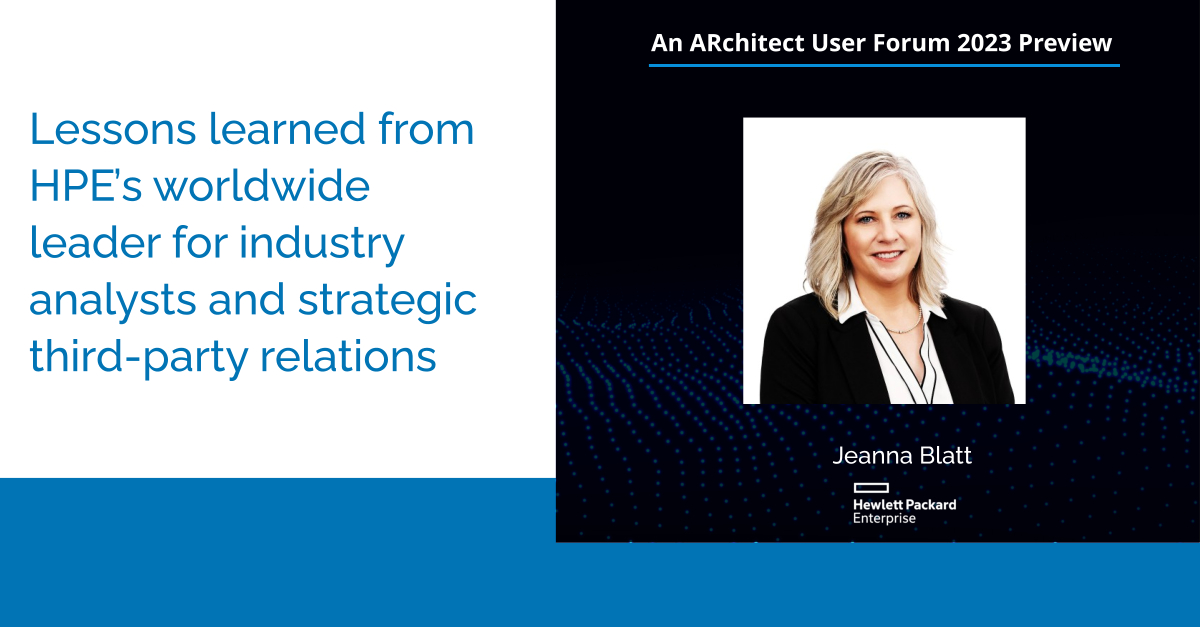Talking analyst relations with someone who doesn’t just have deep AR expertise — but also is an expert in business transformation, strategy and organizational development (not to mention punk rock!) — is sure to result in an interesting, actionable and fun conversation. And it did!
We’re back with Part II of our Profile in AR interview with Karsten Scherer, co-founder of strategic communications and influencer relations consultancy Forge & Refine, and an expert in all the areas mentioned above. If you missed Part I, you can check it out here — covering how and why to build connective tissue between AR and other business functions… and a whole lot more.
Read on to learn about what Karsten classifies as total AR dopamine and Karsten’s advice for non-AR leaders seeking to best support analyst relations.
Q: What’s the best part for you about working in AR?
Karsten: Speaking specifically to AR, there’s an internal piece — what happens within the client — and an external piece too.
On the internal side, I really love helping functions be strategic, while also boosting the functions around them — if the client is AR, that means functions like R&D, innovation, strategy, sales, sales enablement, marketing and so on — and helping them align in ways that are meaningful. That requires understanding their value language and metrics. Everybody has some level of skin in the game, but if the value languages differ between functions, they don’t connect. You can’t get the rising tide to lift all ships otherwise.
There are two external parts I really value. One is developing deep credibility with the analysts we work with. You can only get there with consistency over time: really digging into what they’re thinking and writing about, and contextualizing that in ways that make sense for your company, while also contextualizing your company for the analyst.
So, when you can be more than just an API between a vendor and an analyst — acting as a value-add to each side of the equation — you earn the credibility to engage with analysts on an ideation level. That takes consistency, sometimes over multiple companies. And that, for me, is total dopamine. You know you’re doing something right when the analysts running a keynote, for example, pull you into their development process. It means that we, and the organizations we work with, have done something really well in terms of how we approach and engage analysts.
And I also really love and appreciate the AR community: That’s one of the reasons why I’ve stayed in this game for so long. There are so many smart, talented, really solid human beings in this field. And while it’s awesome to “talk shop” and learn from each other about our craft, I’ve also made some lifetime friends across my career. Those’ll last way after I forget how to spell “MQ.”
Q: What advice would you give non-AR leaders (such as C-suite execs) who are looking to improve their company’s AR function?
Karsten: First, I’d say to take a moment as a leadership team for a reset. Reset both how you view AR, as a function, and also the analyst community as a whole.
Everything has a history: our relationships, our companies, our organizational cultures and so on — there’s always a “before.” So, maybe your organization has a CMO where, in their prior company, AR was super-tactical. They might paint with a broad brush and think: “I don’t see the value here because I didn’t see it before — so you’re not getting my time.” Or maybe your company’s historical placement in a stack-ranking report wasn’t to an executive’s liking, so they’re not inclined to engage with AR further.
In short, my advice to a leadership team would be: Do your organization and AR leader the courtesy of approaching things rationally, logically and objectively — allowing for a reset and allowing your AR leader to present what they think a potential future engagement model with real strategic heft and longer-term impact might look like: both internally and externally with the analysts.
And the second thing — which I’m admittedly biased about, because I love inbound — is never sleep on inbound. Every company has different functions with various levels of maturity and interrelationships that are all responsible for looking at the outside world and helping their organization figure out the proverbial “what it wants to be when it grows up.” It’s my firm opinion that analyst relations can and should play a clear and leading role in that, so help your AR leader plan and staff accordingly. You’re paying for the privilege of engaging analysts and don’t want to leave dollars or opportunity on the table. Those experts are in a position help your business determine how to create content and experiences that are meaningful to your customers and prospects — if you don’t engage with them strategically, they can’t deliver on that.
Q: Do you see the fields of analyst and influencer relations merging? How does this change impact the scope of AR?
Karsten: That’s an interesting and meaty question. I’d actually take a step back and look at how the nature of influence is changing and expanding too. AR functions are embedded in their organizations with other functions as well. There’s a general value chain. And if you work your way back from the customer side: Buying has changed, which means selling has changed. That changes sales enablement, it changes marketing and messaging, and if you go all the way back to innovation, that changes that too. All those changes require passive or active adjustments. And those adjustments impact, and could require some form of influence from, AR.
But getting back to influencers vs. analysts, or whether to combine the two: I honestly think that’s a program-by-program decision in AR. Without a doubt, if you don’t have some kind of connective tissue between your efforts across functions — regardless of who owns those efforts — then that’s a miss, especially when many organizations still don’t distinguish clearly enough between ownership and outcomes.
At any rate, what organizations have to do is see whether a specific influencer has a measurable value that’s higher than the total cost of engaging with them. And if they have that measurable value, the organization has to consider a relationship. Then, depending on the nature of the specific influencer and what you want to leverage them for, that’s the decision criteria for internal responsibility. You’d look at: Is this more of an AR application, brand amplification for marketing, or a sales enablement play?
While the mechanics of good AR translate to working with thought-leadership-type influencers, I don’t think they translate well to marketing-amplification-type influencers. Plus, every AR program leader has to map their efforts against how they’re measured and how they want to evolve their program over time — as well against how they’re staffed and skilled currently.
This is all an evolving area, which is why the space is so interesting. And what that means for AR programs is that they need to keep a bead on change and ideally stay ahead. This is a real options theory moment for AR — what bets can you place now that give you meaningful maneuvering room down the line? If you’ve paid that maneuvering room forward to your future self and you’re clear on how other functions see value, you can now work from a much stronger position to meet them where they are at.
Q: What do you like to do in your free time?
Karsten: What is free time? No, just kidding. One of the reasons why we structure work the way we do at Forge & Refine is to make sure we can balance all the things that matter.
As far as what I love doing: I write a lot about anything and everything. It’s as much compulsion as it is a hobby. I do a regular LinkedIn post on Fridays called Friday Nonsense (recent example on organizational hope here) that is terrible and I recommend no one read.
I love ideas and thinking about things, how they fit together and whether they’ll work or not. My wife Laura [the other co-founder of Forge & Refine, and a former Gartner analyst] and I have a really good ideation thing going; it’s the core around which we’ve built our business.
I also need time outside. Like most of us, I spend a lot of time staring at screens, so getting outdoors positively impacts a lot of areas in my life. When I’m outside, I enjoy running slowly for long distances and long periods of time. I’ve run marathons in the past and currently have some longer distances I’m training for. It’s one of those good mental space types of activities. I used to run a lot with music, but don’t anymore, and I’ve found I really like the quiet and solitude. Going back to ideation — I’ll write a blog post or hash out some idea in my head during a run, often without realizing I’m doing it.
I’m a music junkie, too. I love vinyl. There’s something about music: how it can change the way I feel at the drop of a needle or augment how I’m feeling when I want to amplify that. I also used to be a punk rock drummer — a lousy but very enthusiastic one — and go to shows whenever I can.
Q: Are there other AR experts you’d recommend as resources to our readers and potential “Profiles in AR” subjects?
Karsten: The first person who comes to mind is Ray Upton, who just retired. I love that guy — big brain and big heart. Cathy Mullaney at Verizon is an excellent strategic thinker and human; I enjoy working with her tremendously. Steve Armstrong at AWS — I don’t know him that well, but every time I see him, he’ll offhand drop some nugget that gets me rethinking something. I’d also add Holly Barnett, who recently started her own AR consulting practice. She’s been a go-to sparring partner for me for more years than either of us would care to admit to. There are many, many others, but I doubt anyone wants a Part III in this series.
***
Many thanks to Karsten for sharing his insights and experiences. If you’d like to connect with Karsten, you can reach him on LinkedIn.




